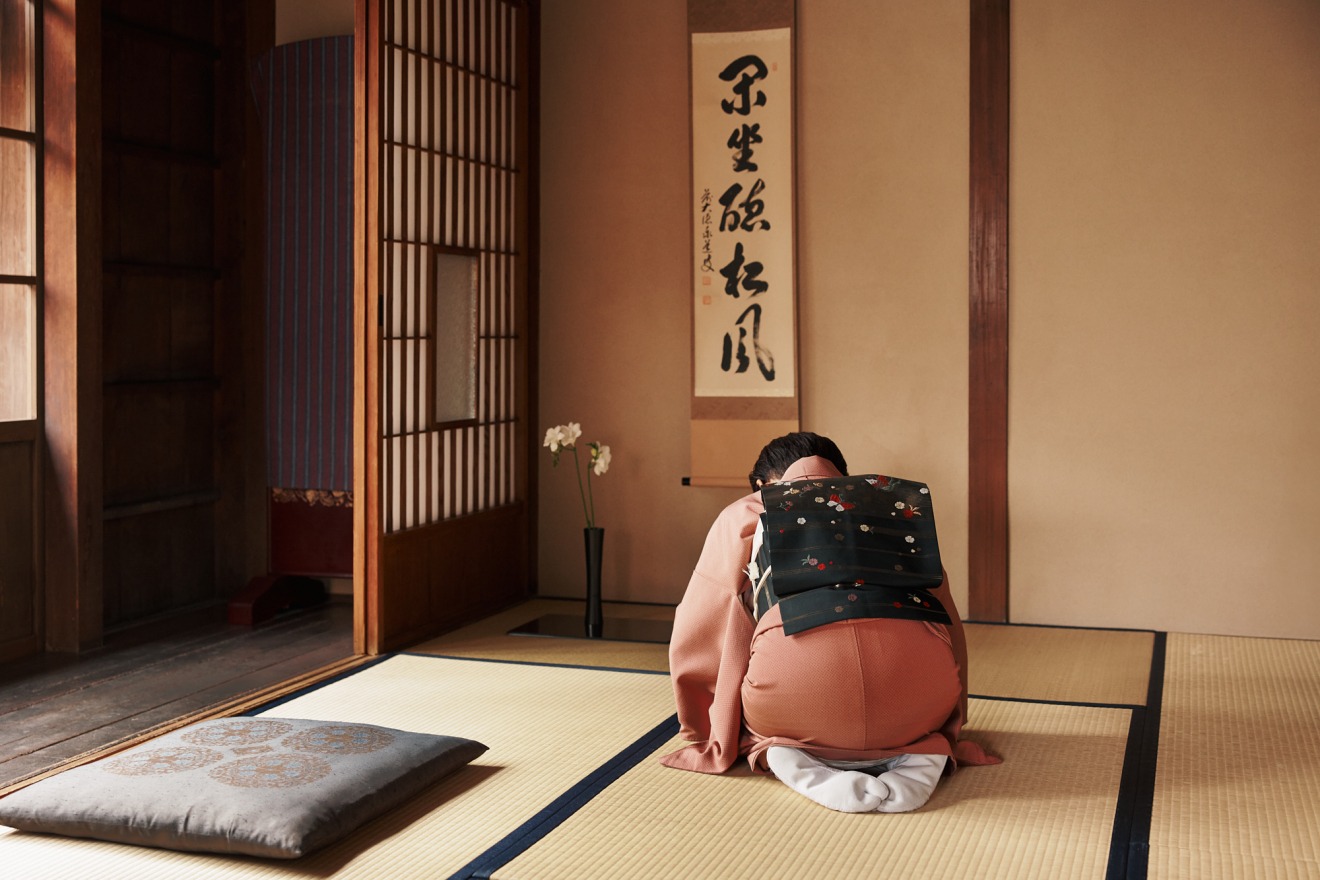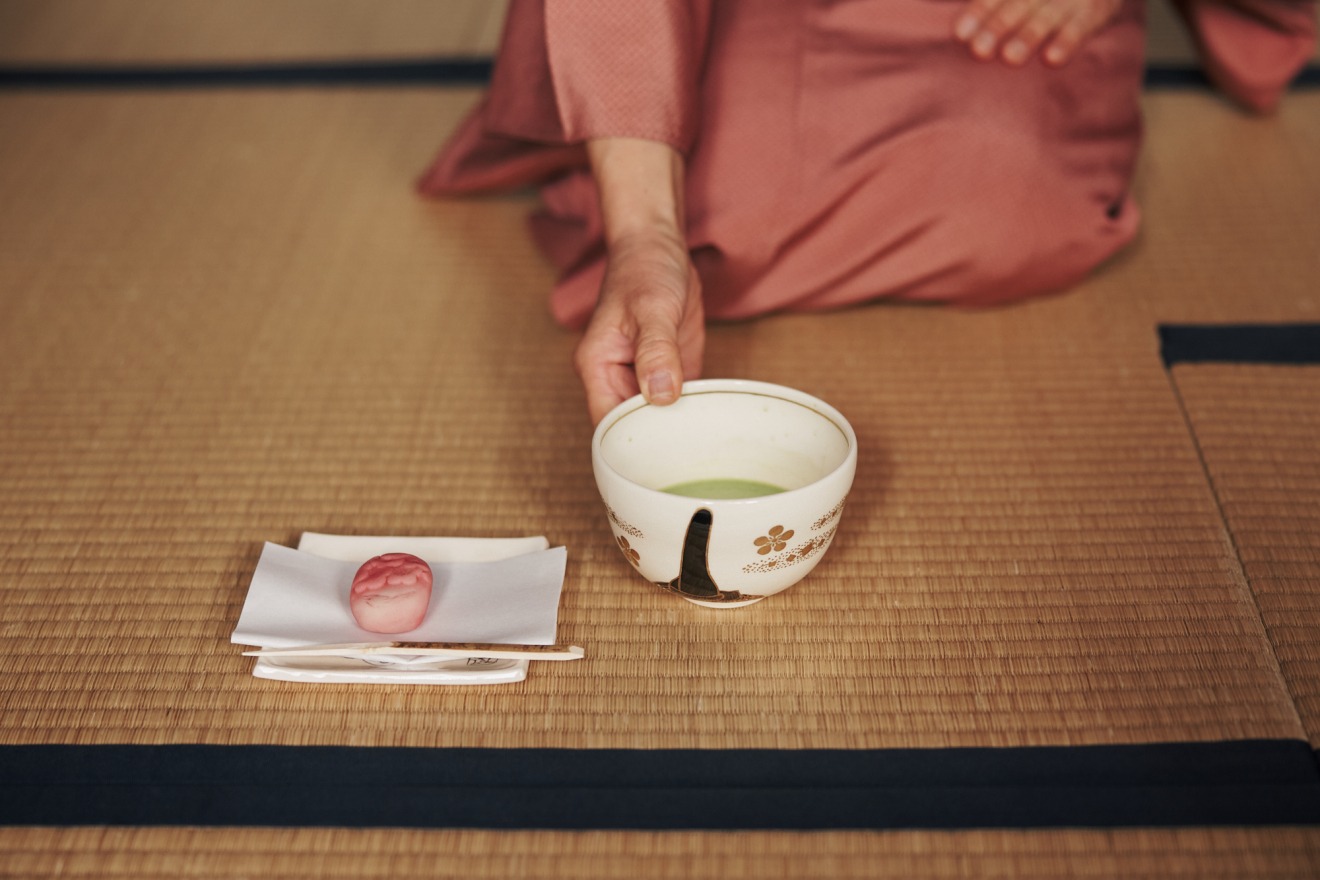PRACTICING CHADO (THE WAY OF TEA) IN A HISTORIC KANAZAWA MACHIYA
Most foreign travelers to Kanazawa would agree that tea in Japan isn’t like tea in other countries.
Similarities may exist where tea is concerned, but outside of Japan the ceremony and ritual of making
tea is never elevated to what one encounters in chado (茶道), or “the way of tea.”

THE CHADO EXPERIENCE AT SOFUAN
Kanazawa is a samurai town whose culture became highly developed during the Edo period (1603-1868).
This was thanks largely to the steadfast support of the Maeda clan, which ruled the Kaga domain (present-day Ishikawa and most of Toyama prefecture) for nearly 300 years. Kanazawa’s cultural development encompassed a diverse range of arts and crafts, and chado was one that the Maeda family particularly favored.
Because of chado’s elevated status within Kanazawa’s traditional culture and the general popularity it has long enjoyed, it’s not surprising that it continues to be practiced today. In fact, students throughout Kanazawa are taught about chado at school, which is probably why more young people here practice it than in just about any other part of Japan. This is good news for visitors to Kanazawa who want to engage with local tradition and culture – and have a thirst for tea, of course.
In Kanazawa, there are many places to try chado, including special public events, formal classes, and even one-one -one lessons with master teachers. More serious chado students enroll in courses from which they can graduate with official recognition for the achievement. (And it’s no small achievement, either!) These days, however, introductory chado experiences are being designed for and offered to travelers.
For visitors to Kanazawa who wish to engage in a unique cultural experience, one of my strongest recommendations is to spend part of a morning or afternoon learning the tea ceremony at Sofuan.
If you’re lucky, you’ll learn not only chado there, but also much about Kanazawa’s past, as Sofuan occupies an old machiya with wonderful architectural features that reflect the highly refined tastes and craftsmanship of previous eras.
Upon entering Sofuan, Ms. Fujita, the friendly chado instructor here, explained to me that the machiya had been given a handful of unobtrusive modern touches, and the second floor had been converted into an accommodation for travelers. Even in the entranceway I felt the history of the machiya, which the town mayor of Wajima had built in 1929 as a getaway, and until ten years ago housed a Kanazawa family. Sofuan’s layout, along with its large pillars and beams inside, are part of its original construction.
I’d be remiss not to describe the setting of my chado experience, for it exudes an atmosphere of the early Showa period (1926-1989) – a memorable aspect of my tea experience.
The first floor has two tatami rooms reserved for the tea ceremony, and merely entering the second of them, where my chado experience unfolded, was a treat in itself. Though the room was
appointed only with what the tea ceremony requires – tea implements and utensils, and a zabuton pillow to sit on – the remaining space seemed to exist to rest my eyes on and admire. Consistent with the chashitsu (tearoom) style, in one corner of the room – meant to be its most honored and dignified – was a tokonoma (alcove) where a kakejiku (hanging scroll) adorned the wall, poetizing how water boiling in a kettle evokes a breeze blowing through pine trees. On the floor beneath the scroll, three blooming white freesias in a bronze karakane vase had been arranged, and above the entrance directly opposite this was calligraphy that read: wa-kei-sei-jaku (harmony, respect, purity, and tranquility: the most important principles underlying chado).
Even more exquisite was the small garden behind the house, which could be viewed through the room’s original tobukuro (stackable wooden doors that slide along a single track) and its handcrafted glass panes.
At one point Ms. Fujita slid all the doors to one side, opening our tea ceremony completely to the garden.
With this barrier between the machiya’s interior and exterior removed, the garden felt like an ingeniously designed extension to the tearoom.
On the tatami floor were the tea implements and utensils we were to use: a selection of chawan tea bowls; a lacquered natsume vessel containing matcha (powdered green tea); a long chashaku scoop to transfer matcha into one’s tea bowl; a hishaku ladle to pour boiling water into the same; a ceramic mizusashi jar to store water; an iron chagama kettle; a chasen bamboo whisk to mix the matcha and hot water until a froth of bubbles covered the surface; and a fukusa silk cloth to clean the utensils before and after preparing tea. Many of these implements and utensils have interesting local provenances and histories, so don’t forget to ask about them!
Ms. Fujita, who speaks English well, is highly accomplished and experienced in chado, having practiced it all her life.
On the day I visited, she told me that we would be practicing the Urasenke school of Japanese tea ceremony, which began in the 1600s with Sen no Rikkyu as its founder.
For the uninitiated student of chado, Ms. Fujita provides signage in English at important moments of the tea ceremony, which makes the experience smoother when one is new at it and prone to mistakes – like I proved to be. She expertly taught me how and when to bow in respect, what to say prior to picking up my tea bowl, and what to do before and after drinking my tea.
Ms. Fujita: “Turn to the guest to your right, bow down, and say, Oshobon itashimasu. This is a polite way
to say, I will join you.”
Me: “Oshobon itashimasu.”
Ms. Fujita: “Douzo. (By all means.) Now turn to the guest to your left, bow down, and say, Osakini. This is a polite way to apologize for going before them.”
Me: “Osakini.”
Ms. Fujita: “Douzo. (Certainly.) Finally, to your host – that’s me – bow once more and say, Otemae chodai itashimasu. This is a polite way to say, Thank you for making tea.”
Me: “Otemae chodai itashimasu.”
Ms. Fujita: “Douzo. (Please help yourself.)
I was pleased to discover that chado at Sofuan involves making matcha tea twice.
Ms. Fujita made the first bowl of matcha, her movements both exact and elegant. When she had finished,
she served the freshly whisked tea to me with a seasonal wagashi (traditional Japanese sweet) from a
renowned local confectionery shop called Yoshihashi Kashi. The wagashi was more precisely jonama-gashi
(fresh sweet), and mine came, on kaishi Japanese tea paper, in the color and shape of a plum blossom.
While visitors may feel tempted to grab and eat their wagashi in a single bite or two, it’s important to
keep in mind that this, too, involves certain rituals, so be sure you know what they are first!
Now that I’d watched Ms. Fujita in action, it was time for me to make the second bowl of matcha, using
what I’d just been taught. As I stumbled through the first couple of steps, it was reassuring to see her
sitting to my side, going through the same motions as I was and gently reminding me what to do. As my
confidence grew and I started to get the hang of chado, I realized that I was finished! Ms. Fujita again
served me wagashi, this time on a tray holding two higashi (dried confectioneries), the first resembling a
fukinoto (the flower bud of a butterbur plant) and the second a sweet senbei (rice cracker) made soft
and chewy with agar-agar.
Quietude typically pervades the chado ceremony, and any talk that occurs usually centers on the tea itself,
or the utensils with which it’s made, or some aspect of nature, such as the weather, or the view of the
garden, or an ikebana arrangement, but Ms. Fujita makes plenty of allowances for students who have
questions for her. And, of course, she too speaks about the tea ceremony in her role as an instructor.
Chado can be both a wonderful entry and a deeper foray into traditional Japanese culture. Experiencing it
at Sofuan offered me not only the chance to become acquainted with the Japanese tea ceremony, but also
with traditional architecture, pottery and ceramics, lacquerware, wagashi, flower arranging and gardens,
and Japan’s famous omotenashi hospitality. It also reminded me yet again why Kanazawa is such a
wonderful destination for Japanese and non-Japanese travelers alike.
Text by Novelist David Joiner
Photo by Nik van der Giesen
- Sofuan
-

- A relaxing private rental accommodation of Kanazawa machiya townhouse
- more
- One of the most accessible Japanese tea experiences in Kanazawa!
-

- Near the Kenrokuen park, take a break to enjoy the tea ceremony in a casual and friendly way!
- more
- Japanese Calligraphy: Experience the core of Japanese culture!
-

- In a beautiful Japanese house near the Kenrokuen park, learn to draw characters and seal your Kanazawa experience on a fan that will stay with you forever!
- more
- Soyu Tea Ceremony Experience
-

- Experience an authentic tea ceremony in a Kanazawa machiya located in the Higashi Chaya district of Kanazawa City.
- more
private tea ceremony experience in Kanazawa higashiyama -

- Leave your busy daily life and enjoy a cup of tea in the quiet tea room. Take a break while you travel. all private
- more
- Tea ceremony with Japanese traditional kimono. Experience the core of Japanese traditional culture in Kanazawa’s most picturesque historical districts!
-

- In a beautiful townhouse of the district, try on an authentic traditional outfit before attending a tea ceremony with kimono in the house’s tea room, all private
- more









